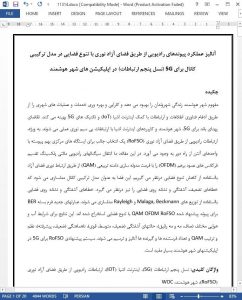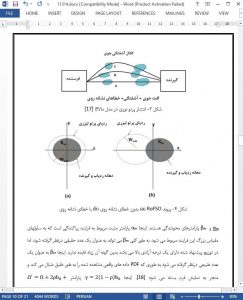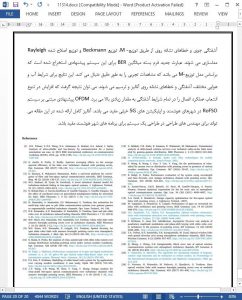Abstract
The smart city concept improves the lives of citizens and optimizes the efficiency of city operations, services through the integration of information and communication technology with the help of the internet of things (IoT) and 5G techniques. The bandwidth demand for 5G, smart city, and IoT applications are fulfilled with wireless optical communications. Particularly, radio over free space optical (RoFSO) communication establishes a very attractive choice for interconnecting central base stations with remote antenna units. In this paper, we consider the transmission of orthogonal frequency division multiplexing (OFDM) radio signals with quadrature amplitude (QAM) modulation format through a free space optical link using spatial diversity mitigation technique. The atmosphere is modeled as the combined channel model which takes into account atmospheric attenuation, turbulence, and pointing errors. The atmospheric turbulence and pointing errors are modeled by Malaga, Beckmann, and Rayleigh distributions. The novel closed form BER expressions are derived for the proposed QAM OFDM RoFSO link with spatial diversity. The results are analyzed and plotted for different weather conditions (clear, haze, light fog), turbulence regimes (weak, moderate, strong), misalignment (weak, enhanced), the order of QAM and number of transceivers. The proposed RoFSO system is highly useful for 5G in smart city applications.
1. Introduction
The whole smart city concept is based on the integration of information and communication technology. Smart city concept is imagined for the best utilization of the available resources. Internet of things (IoT) is basically connecting any device to the internet and controlling its functions through commands from the internet. So, for making the smart city a reality IoT is essentially needed. 5th generation(5G) technology is needed for dealing with the huge amount of data and the requirement of high speed communication in the smart cities. 5G technology promises to provide the required data rate (>1 Gbps) and low latency (ms level) [1] with the use of low power small cells (e.g. microcells and picocells), it enhances the coverage and capacity of the network by spatial reuse of spectrum.
6. Conclusion
In this work, we investigated the BER performance of K-QAM OFDM RoFSO link with spatial diversity. The channel model is considered as the combined one with the effects of atmospheric attenuation, turbulence and misalignment fading. The atmospheric turbulence and the pointing errors are modeled through M-distribution, Beckmann and modified Rayleigh distribution respectively. The novel closed form expression of the average BER is derived for the proposed system which is based on the M-distribution model which follows accurately experimental observations. The results are analyzed and plotted for different weather, turbulence, and pointing error conditions. It can be concluded that the increment in the diversity branch enhances the performance of the link in great amount in all turbulence conditions. The proposed OFDM based RoFSO system is highly useful in smart cities and 5G applications. The complete analysis presented in the paper can be useful for the design engineers in designing a system, for smart city applications.











